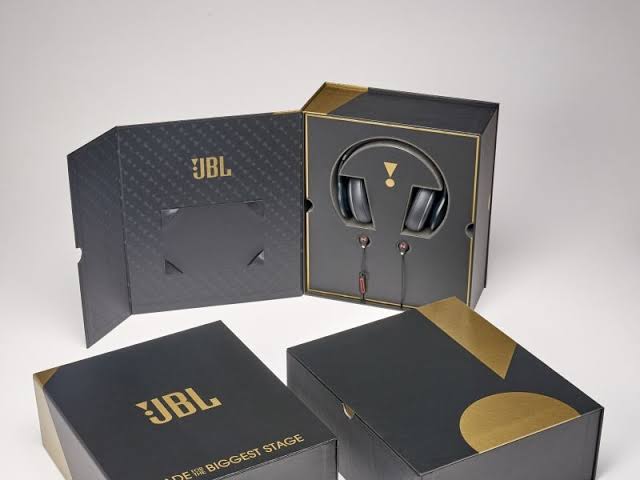Packaging serves as the physical embodiment of a brand, representing its values, personality, and promise to consumers. Beyond its practical function of protecting and preserving products, packaging plays an important role in shaping consumer perceptions, influencing purchasing decisions, and fostering brand loyalty. Read along to learn more on The Importance of packaging in branding.

From the design and materials used to the messages and images displayed, packaging conveys important brand attributes such as quality, reliability, and innovation. In an increasingly competitive market, effective packaging is essential for consumer products to stand out on crowded shelves, capture attention, and leave a lasting impression on consumers.
Product display strategy overview

Product display is a set of strategies and techniques aimed at optimally presenting products and maximizing their appeal to consumers. Every aspect of product presentation, from the way it is presented in-store to the images and messages used in marketing materials, is carefully crafted to create a positive and memorable experience for consumers.
Product presentation strategies, including innovative packaging design, appealing visual merchandising, and immersive digital experiences, aim to captivate the senses, evoke emotion, and ultimately increase purchase intent.
Understanding the role of packaging
Influence of packaging on consumer perception

Packaging is the first point of contact between the consumer and the product and leaves a strong impression that can have a significant impact on consumers. Purchase decision, Packaging design, materials, and presentation can convey important information about a product's quality, value, and brand identity. Consumers often judge products based solely on packaging and associate attributes such as professionalism, reliability, and innovation with well-designed packaging.
Additionally, packaging can evoke emotions and trigger sensory experiences that shape consumer perceptions and preferences. Understanding the impact that packaging has on consumer perceptions is critical for consumer goods brands to effectively communicate their brand values and differentiate themselves in the marketplace.
Psychological aspects of packaging design

Packaging design is not just about beauty. Psychological principles are also used to influence consumer behavior and decision making. Elements such as colors, typography, images, and shapes can evoke specific emotions and associations that resonate with your target group. For example, bright colors and bold typography can convey a sense of energy and excitement, while minimalist design and natural tones can evoke a sense of simplicity and purity.
Similarly, packaging that includes familiar symbols and cultural references can create a sense of familiarity and connection with consumers. By understanding the psychological aspects of packaging design, consumer goods brands can use these insights to create packaging that resonates with their target audience and drives engagement.
Functional requirements and practical considerations

In addition to aesthetics and psychology, packaging design considers practical requirements and practical considerations to effectively achieve the intended purpose. Considerations must also be met. Factors such as product protection, convenience and sustainability play an important role in the design and materials used in packaging. Packaging must be easy for consumers to open and use, yet sturdy enough to withstand handling and transportation.
Additionally, as consumers become more environmentally conscious, brands are under pressure to adopt sustainable packaging solutions that minimize environmental impact and waste. Balancing functional requirements with aesthetic and psychological considerations is important to create packaging that not only looks good but also performs well and meets consumer values and expectations.
Designing your packaging to reflect your brand identity
Consistency with brand elements

Effective packaging design seamlessly fits into your brand's overall identity and message. Consistency across all brand elements, including color palette, typography, imagery, and messaging, strengthens brand recognition and solidifies your brand identity in the minds of consumers.
Whether it's a minimalist design that reflects the brand's pursuit of simplicity, or bright colors that convey energy and excitement, packaging should evoke the same emotions and associations as other brand touchpoints. Consistent brand elements create a consistent, unified brand experience, making it easier for consumers to identify and engage with your brand in a crowded marketplace.
Integrating brand values and personality

Packaging provides a valuable opportunity to communicate a brand's values, personality and unique selling points. Whether your brand is known for its commitment to sustainability, innovation, or craftsmanship, packaging design can visually communicate these attributes to consumers.
There are many ways to incorporate brand values into your packaging design, including using eco-friendly materials, presenting product and origin stories, and showcasing brand endorsements and certifications. Additionally, injecting personality into your packaging - whether it's playful, sophisticated or bold - can differentiate your brand and create a memorable and authentic connection with your consumers.
Create memorable and distinctive packaging

In a competitive market, standing out on the shelf is important to attract consumers' attention and increase their purchase intent. A unique and memorable packaging design differentiates your product from the competition and leaves a lasting impression on consumers. This can be achieved through unique structural designs, eye-catching visual elements, or innovative packaging formats that surprise and delight consumers. Consider incorporating tactile elements, interactive features, or unconventional materials to create a sensory experience that captivates consumers and leaves a lasting impression. By creating memorable and distinctive packaging, consumer goods brands can increase brand awareness, increase consumer engagement, and ultimately increase sales and brand loyalty.
Communicating product features and benefits

Packaging is a powerful tool for communicating product features and benefits to consumers. It functions as a useful tool. Through images, messaging, and design elements, packaging can highlight key product attributes, functionality, and advantages over competing products.
Whether it's showcasing product specifications, highlighting unique selling points, or explaining how your product solves a specific consumer need or problem, effective packaging design helps consumers understand your product. Communicating product features and benefits clearly and concisely through packaging improves consumer understanding and awareness of the product, ultimately increasing sales and brand loyalty.
Competitive differentiation

In a crowded market, differentiation is essential for consumer goods brands to stand out and attract consumers' attention. Packaging plays an important role in differentiating your product from the competition and communicating its unique selling points. By using distinctive design elements, innovative packaging formats, and creative messaging, brands can create packaging that stands out on the shelf and differentiates their products from the competition. Additionally, highlighting key differentiators such as superior quality, unique ingredients, and innovative technology will help consumers understand why they should choose your product over others. Effective differentiation through packaging design not only attracts consumers, but also strengthens brand positioning and strengthens brand equity in the minds of consumers.
Increasing perceived value and luxury

Packaging design can have a significant impact on the perceived value and perceived quality of a product in the eyes of consumers. By using high-quality materials, elegant finishes, and sophisticated design elements, brands can increase the perceived value of their products and establish themselves as premium products in the market. Packaging that exudes quality, craftsmanship, and attention to detail conveys a sense of luxury and exclusivity, making consumers realize that the product is worth the price.
Additionally, strategic brand elements such as embossed logos, metallic accents, and minimalist designs further enhance the premium appeal of the packaging and inspire a sense of desire and aspiration in consumers. By increasing perceived value and premium appeal through packaging design, consumer product brands can command higher prices, attract discerning consumers, and increase perceptions of luxury and desirability for their products.
Creating an unforgettable unboxing experience
Expectation and excitement

The unboxing experience begins long before the consumer gets the product. Anticipation and excitement build from the moment you order or purchase a product. Brands can capitalize on this sense of anticipation by using pre-purchase marketing activities like teaser campaigns, sneak peeks, and behind-the-scenes looks to build excitement and anticipation for the unboxing experience. By highlighting a product's features, benefits, and unique selling points, brands can pique consumer curiosity and build anticipation for the moment when they can finally unbox the product and experience it for themselves.
Product unveiling

Unpacking is a ceremonial experience that makes opening a package a memorable and enjoyable moment for consumers. Brands can improve this experience by paying attention to every detail during unboxing, from packaging design to the presentation of the product inside. Considerations such as packaging materials, box design, opening mechanisms, and protective layers all impact the overall opening experience.
Your brand can also include interactive elements, such as: reveal tabs, hidden compartments, or continuous displays to add an element of surprise and intrigue to the unboxing process. By carefully designing the unboxing experience, brands can create a sense of excitement and anticipation that increases consumer satisfaction and fosters positive brand associations.
Incorporating elements of surprise and delight

One of the main goals of the unboxing experience is to evoke positive emotions in the consumer and create moments of surprise and delight. Brands can achieve this by incorporating unexpected elements or “Easter eggs'' into their packaging design and product presentation. This includes personalized notes, thank you cards, free samples, small gifts, and more to exceed customer expectations and express your appreciation.
Additionally, brands can use creative packaging techniques such as innovative folds, unique textures, and playful illustrations to add a quirky, playful touch to the unboxing experience. By incorporating elements of surprise and fun into the unboxing process, brands can leave a lasting impression on consumers and encourage loyalty and advocacy for their products.


